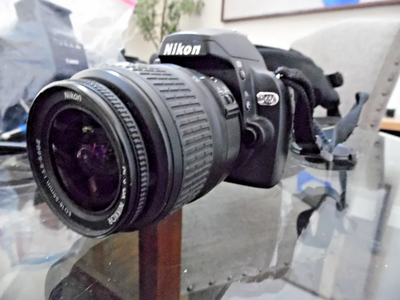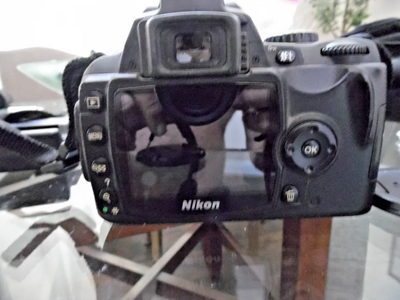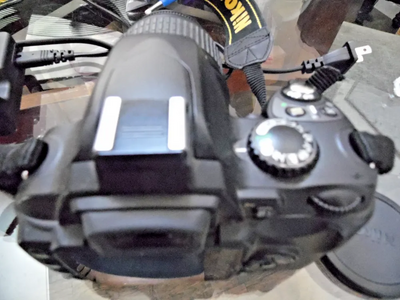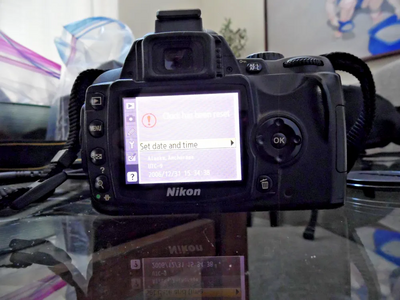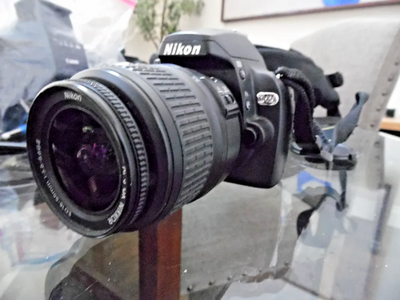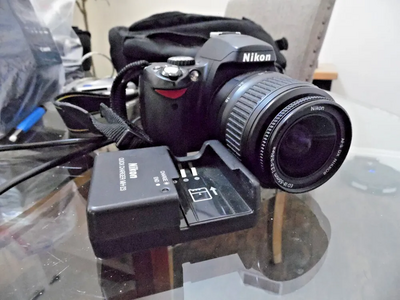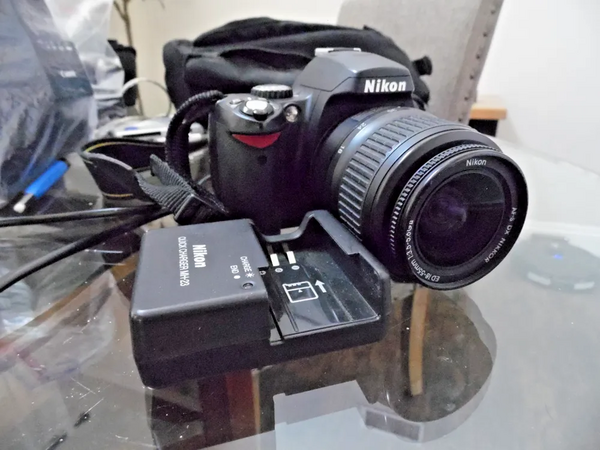
Nikon D40x
| Brand | Nikon 2007 |
| Model | 26194, 26345, WB150F, COOLPIX L120 |
| Released Year | 2007 |
| Type | Digital Cameras |
| Series | D |
| Color | Black |
| Optical Zoom | 21x |
| Status | Discontinued |
Quick view
Overview
The Nikon D40x is a 10.2-megapixel digital single-lens reflex (DSLR) camera introduced as an upgrade to the Nikon D40 model. It utilizes a Nikon DX-format CCD image sensor with a size of 23.7 x 15.6 mm, providing high-resolution images suitable for both amateur and semi-professional photography. The camera supports 12-bit RAW file output and offers multiple ISO sensitivity settings ranging from 100 to 1600, allowing for flexibility in different lighting conditions. Its EXPEED image processing engine enhances image quality and noise reduction performance. The camera integrates a 2.5-inch LCD monitor for instant image review and menu navigation. Additionally, the D40x supports various autofocus modes with 3 focus points, optimizing accuracy and subject tracking.
Construction-wise, the D40x features a compact and lightweight chassis that balances portability and ergonomics. Compatible with Nikon F-mount lenses, it expands creative possibilities through versatile lens selection. The camera supports shooting speeds up to 3 frames per second (fps) in continuous mode, suitable for action photography. It stores images on Secure Digital (SD) memory cards and provides USB 2.0 connectivity for file transfer. The battery life accommodates extended shooting sessions with EN-EL9 rechargeable battery packs. Overall, the Nikon D40x offers a solid blend of imaging performance and ease of use for DSLR entry-level users.
Specifications
| Maximum Aperture | f/3.5 |
| Digital Zoom | 15x |
| Screen Size | 2.5 in |
| Color | Black |
| MPN | 26194, 26345, WB150F, COOLPIX L120 |
| Battery Type | Lithium-Ion |
| Series | Nikon D |
| Type | Digital SLR |
| Maximum Resolution | 10.2 MP |
| Item Height | 3.7 in |
| Model | Nikon D40X |
| Connectivity | USB 2.0 |
| Optical Zoom | 21x |
| Charger Included | Yes |
| Features | Image Stabilization, Auto Focus, Wi-Fi |
| Country/Region of Manufacture | Japan |
| Item Weight | 15.36 Oz. |
| Camera type | Digital Single-Lens Reflex (DSLR) |
| Sensor | 10.2 MP DX-format CCD sensor (23.7 x 15.6 mm) |
| Image Processor | Nikon EXPEED |
| ISO Range | 100 to 1600 |
| Autofocus Points | 3 Point TTL Phase Detection |
| Continuous Shooting Speed | 3 frames per second |
| LCD Monitor | 2.5-inch TFT LCD with 230,000 pixels |
| Storage Media | Secure Digital (SD) / SDHC cards |
| Lens Mount | Nikon F-mount (with AF contacts, no motor) |
| Shutter Speed Range | 30s to 1/4000s, bulb mode |
| Exposure Modes | Manual, Aperture Priority, Shutter Priority, Programmed Auto |
| White Balance | Auto, Incandescent, Fluorescent, Direct Sunlight, Flash, Cloudy, Shade, Preset Manual |
| Viewfinder | Pentamirror with approx. 95% frame coverage |
| Battery | EN-EL9 Lithium-Ion rechargeable battery |
| Dimensions | Approx. 126 x 94 x 64 mm |
| Weight | Approx. 495 g (body only) |
| Metering System | 420-pixel RGB sensor with 3D Color Matrix Metering II, center-weighted, and spot metering |
| Flash | Built-in pop-up flash with GN 12 (ISO 100) |
| Image Formats | JPEG (Exif 2.21), RAW (12-bit NEF) |
Images
Key Advantages
The Nikon D40x provides an improved 10.2-megapixel CCD sensor over its predecessor, delivering sharper and more detailed images. Its compact and lightweight design enhances portability without compromising functionality. Enhanced ISO range enables better low-light performance while minimizing noise. The inclusion of the EXPEED image processor allows for improved color accuracy and image processing speed. Compatibility with a wide range of Nikon F-mount lenses broadens creative scope for various photography styles. The intuitive user interface and ergonomics make it accessible for beginners while retaining manual controls for advanced users.
Limitations
The Nikon D40x has a limited autofocus system with only 3 focus points, which can be restrictive for fast-moving subjects. Its continuous shooting speed of 3 fps is modest compared to higher-end models, limiting rapid action capture. The 2.5-inch LCD screen size is relatively small and lacks live view functionality. Video recording capabilities are not available, limiting multimedia applications. The camera uses a CCD sensor, which generally consumes more power and may not match the noise performance of CMOS sensors in newer models. Lastly, the maximum ISO of 1600 may not be sufficient in very low-light environments compared to more recent cameras.
FAQ
What is the sensor type of the Nikon D40x?
The Nikon D40x uses a 10.2-megapixel DX-format CCD image sensor measuring 23.7 x 15.6 mm.
Does the Nikon D40x support video recording?
No, the Nikon D40x does not have video recording capabilities.
What is the continuous shooting speed of the D40x?
The camera can shoot continuously at up to 3 frames per second.
Which lenses are compatible with the Nikon D40x?
The Nikon D40x is compatible with Nikon F-mount lenses.
What storage media does the D40x use?
It uses Secure Digital (SD) memory cards for image storage.
Does the Nikon D40x offer manual exposure controls?
Yes, it provides manual, aperture priority, shutter priority, and program exposure modes.
Is the Nikon D40x still being manufactured?
No, the Nikon D40x has been discontinued.
Disclaimer
The content on is provided for general informational purposes only. We do not guarantee the accuracy, completeness, or reliability of any information, specifications, or visuals presented on the site.
is not responsible for any content, images, or data uploaded or shared by users. Users are solely responsible for the content they submit.
We may include links to third-party websites for convenience. We do not endorse or take responsibility for the content or policies of any external sites.
Use of the site is at your own risk. Always verify critical information independently before making decisions based on content from this website.

